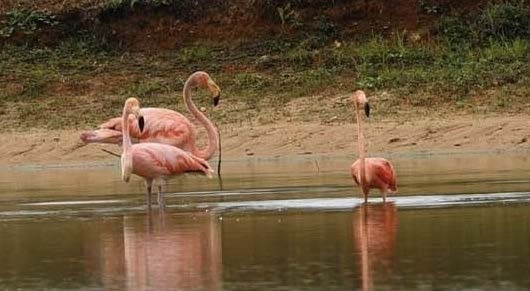Residents of Hale County and bird watchers from throughout the region were in for a treat this past weekend when a group of flamingos took up temporary residence in a farm pond in the Stewart community. Janet and Donnie McKemie, the landowners, were as surprised as anyone to find these exotic birds in their pond.
Bird experts who visited the site believe that the flamingos, which are not native to Alabama, may have been migrating from Mexico and got caught in the winds of Hurricane Idalia. The experts assured the McKemies that the birds would likely move on once they get hungry, as their diet primarily consists of fish and shrimp.
The unexpected appearance of the flamingos has caused quite a stir in the Alabama bird-watching community, especially in Hale County, which is no stranger to avian enthusiasts. Every year, the county hosts the Black Belt Birding Festival, with the most recent one held in Greensboro in August. The festival attracts bird watchers and nature lovers from all over the state and beyond.
Moreover, the Alabama Audubon Society has a keen interest in Hale County, particularly the Jay Farm bird-watching preserve near Newbern. This preserve is nationally renowned and serves as a testament to the rich avian biodiversity of the region.
The McKemies have welcomed several sightseers eager to catch a glimpse of the flamingos.
According to a social media post from Melinda Wheeler, a member of the Alabama Birding Trails, the flamingos displayed some fascinating behaviors. She noted that they perform a dance, akin to the electric slide, to stir up food before scooping it up. Observing them through a long lens as they glided backward through the water even gave her a sense of seasickness.
Flamingos are typically found in parts of Africa, Asia, the Americas, and Europe, often in large alkaline or saline lakes. Their vibrant pink color comes from beta-carotene, a redorange pigment found in the algae, crustaceans, and other food they consume.
While many local residents have only seen flamingos in zoos, this rare sighting has provided them with a unique opportunity to observe these birds in a more natural, if unlikely, setting.






